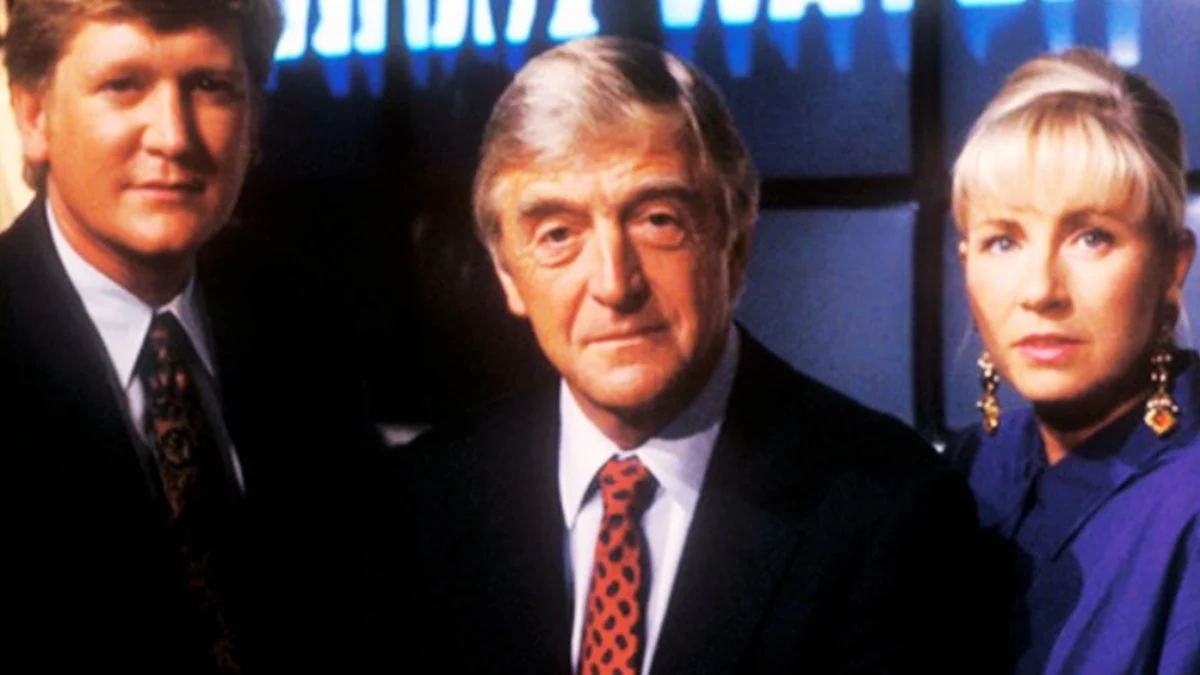
I still remember when I first saw Ghostwatch back in 1992. It was a BBC Halloween special, presented as a real-life investigation into a haunted house, and it genuinely terrified a lot of people – it’s still talked about as one of the most shocking things British television has ever done!
It was incredibly realistic, leading many people to think they were watching a real, live event. This caused widespread chaos, panic, and anger, and some viewers even reported feeling emotionally distressed.
Stephen Volk wrote the show, and Lesley Manning directed it. It was an episode of the BBC’s Screen One drama series, but it was presented as a live investigation into unusual ghostly happenings in a London house.
Popular TV hosts like Michael Parkinson, Sarah Greene, Mike Smith, and Craig Charles played themselves in the show, making it seem even more believable. Many viewers didn’t know it was all filmed in advance and wasn’t actually happening live. This meant that when bizarre events occurred – objects moving, children yelling, and hosts being targeted – people genuinely believed it was real.
The BBC was flooded with around one million calls that night. People were either upset about the broadcast or simply wanted information. The next day, newspapers criticized the BBC, claiming they had frightened the country. The public’s reaction was similar to the widespread panic caused by Orson Welles’ famous 1938 radio drama, The War of the Worlds, which had also led listeners to believe an alien invasion was underway.
A major complaint about the show was that having well-known faces, like Sarah Greene from children’s television, led parents to believe it was suitable for kids – which it wasn’t. Towards the end, things got genuinely scary, with Greene’s character locked in a dark cupboard while a ghost screamed, and Parkinson appearing to be taken over by a supernatural force live on air.
A lot of people were upset by what they saw, and some felt the BBC had crossed a line by attempting to deceive viewers.
The issues didn’t stop with the broadcast itself. Sadly, five days after watching Ghostwatch, an 18-year-old factory worker named Martin Denham died by suicide.
His family believed the television show deeply frightened him and blurred the lines between what was real and make-believe. In a note he left behind, he expressed a desire to join the ghosts he’d seen on the show. His parents held the BBC responsible, claiming the program had “hypnotized and obsessed” their son. Later, a broadcasting watchdog determined the BBC should have done more to emphasize the show’s fictional nature, finding it too disturbing and intense for its time.
Some children were so frightened by the television program Ghostwatch that they developed symptoms similar to post-traumatic stress disorder. In 1994, doctors Simons and Silveira wrote about two boys in the British Medical Journal who experienced anxiety and had nightmares after watching it.
These were reportedly the first instances of post-traumatic stress disorder linked to watching a TV show. While more cases were reported afterward, later research suggested that most children recovered quickly from their symptoms.
After the strong public response, Ghostwatch was never re-aired on British TV. The BBC essentially shelved it, acting as if it didn’t exist. However, it gradually became a popular cult classic.
The film became available on video and DVD through the British Film Institute, and later appeared on streaming platforms like Shudder in 2017. To celebrate its 30th anniversary in 2022, a Blu-ray edition was released, including a new documentary titled Do You Believe in Ghosts?
The show continued to have an impact years later. Illusionist Derren Brown even told writer Stephen Volk that Ghostwatch inspired his own show, Séance, which Volk said he was very proud of. Fans have also pointed out how Ghostwatch influenced later horror hits like The Blair Witch Project and the 2020 online film Host.
Volk later expanded the story with a sequel called “31/10,” which revisited the haunted studio a decade later. The story received several award nominations and helped maintain the popularity of the original “Ghostwatch.”
Even after over thirty years, Ghostwatch isn’t just remembered as a scary TV show—it’s seen as a demonstration of television’s immense power. What began as a Halloween special ended up deeply unsettling many viewers, proving that a convincing fake can be more frightening than reality itself.
Read More
- Fed’s Rate Stasis and Crypto’s Unseen Dance
- Silver Rate Forecast
- Blake Lively-Justin Baldoni’s Deposition Postponed to THIS Date Amid Ongoing Legal Battle, Here’s Why
- Ridley Scott Reveals He Turned Down $20 Million to Direct TERMINATOR 3
- Красный Октябрь акции прогноз. Цена KROT
- Northside Capital’s Great EOG Fire Sale: $6.1M Goes Poof!
- Dogecoin’s Decline and the Fed’s Shadow
- Bitcoin’s Ballet: Will the Bull Pirouette or Stumble? 💃🐂
- ETH to the Moon? 🚀 Or Just a Bubble?
- The VIX Drop: A Contrarian’s Guide to Market Myths
2025-10-31 16:15